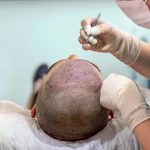The US is facing an unprecedented shortage of nurses. This is a cause for concern as the demand for healthcare is increasing. Researchers believe that the main reasons for the shortage are the aging registered nurse population and the lack of new nurses entering the field. Due to this acute shortage of nurse practitioners, the demand for qualified nurses is high. The US Bureau of Labor Statistics (BLS) estimates that from 2021 to 2031 the demand for nurse practitioners along with nurse midwives and anesthetist nurses will grow by 40%. So, the future is bright for those who want to enter the nursing field.
Nurses usually are the first point of contact when patients visit healthcare facilities. These nurses not only assess patients but also diagnose their health problems using a variety of available resources. The good news is that the field of nursing offers nurse practitioners opportunities to advance in their roles so that they can grow professionally and also cater to the needs of their patients. Many nurses want to provide care to patients of all ages, right from infancy to adulthood. For this, registered nurses can earn an advanced degree and qualify as family nurse practitioners (FNPs).
After getting certified, licensed FNPs can practice in all 50 states in the US, including Washington DC. Some states provide FNPs with full practice authority so they can not only examine and diagnose patients and maintain their records but also prescribe medication, provide preventive care and educate patients to enable them to take responsibility for their overall health.
Overview of FNPs
FNPs play an essential role in assessing and diagnosing common health problems and conditions. They utilize their specialized knowledge and training to ensure that their patients receive comprehensive care. Family nurse practitioners are advanced registered nurses, who have earned advanced education and training in family nursing.
As mentioned earlier, FNPs are trained to perform health assessments and diagnose patients as well as manage acute and chronic illnesses. They can even order and interpret diagnostic tests, administer vaccinations, promote health and prevent diseases through patient education and counseling.
Importance of assessment and diagnosis in healthcare
Before looking at how FNPs assess and diagnose patients, student nurses need to understand the importance of assessment and diagnosis. Both components form the foundation for effective patient care.
During the assessment process, the healthcare provider collects information about the patient’s current status, medical history and the symptoms they are experiencing. Through analysis of this information, the healthcare provider can identify the health concerns. FNPs and other healthcare providers arrive at a diagnosis based on the available data using their clinical judgment.
Both assessment and diagnosis help to identify health issues in a patient. With these two processes, healthcare providers can identify and treat the issue early so that it does not become more serious. As a result, it not only improves treatment outcomes but also reduces the cost of healthcare. For instance, if FNPs can identify high blood pressure early on, it can prevent the person from later developing complications, such as heart disease or stroke.
Assessment and diagnosis allow healthcare providers to develop a comprehensive care plan for patients. Once they make a diagnosis, healthcare providers work with the patient to develop a customized care plan that addresses their specific concerns and needs. The plan can include managing the patient’s medication, making lifestyle changes or any other intervention that aims to improve the overall health and wellbeing of the patient.
It is also important to note that assessment and diagnosis help to improve patient safety. Using these two procedures, healthcare providers can accurately identify health issues and avoid medication errors, adverse reactions and any other possible safety hazards. It also allows healthcare providers to monitor the patient’s progress throughout the treatment and ensure that their care plan is effective and appropriate.
Finally, assessment and diagnosis also are important for research and improving the quality of treatment provided to patients. Both these procedures provide data on treatment outcomes, and using this information, healthcare providers can find the best practices to improve the quality of care and advance their medical knowledge.
How FNPs perform assessment and diagnosis
Family nurse practitioners learn during their training and hands-on experience how to assess and diagnose patients. Here are some of the procedures they follow to ensure accurate assessment and diagnosis:
Taking the patient’s history
The first step is getting the patient’s entire medical history. FNPs begin collecting information by asking the patient about their current symptoms. This includes the onset, duration and severity of the symptoms. They also ask the patient about any precipitating or aggravating factors and any treatments that the patient may have tried earlier.
When noting down the patient’s medical history, FNPs get details about past illnesses, surgeries, allergies, hospitalizations and medications. They also find out about the family’s medical history, as certain illnesses can be genetic, or a person is predisposed to getting an illness if it runs in the family.
During the initial discussion with the patient, FNPs also ask questions about the patient’s lifestyle habits. These include finding out more about diet, stress levels, sleep habits and exercise. Since FNPs know that social and environmental factors also affect a person’s life, they may inquire about these. It can include finding out about exposure to toxins, living conditions and/or occupation.
By asking a patient about their medical history, FNPs get valuable insights into the patient’s health status and can come up with a differential diagnosis based on their existing symptoms.
Physical checkup
After getting the complete medical history, FNPs perform a physical examination. This enables them to assess the patient’s overall health and identify signs of common health conditions. The examination includes checking blood pressure, pulse, respiration rate and temperature. FNPs also inspect the patient’s skin, eyes, ears, nose, throat and mouth to check for signs of infection or other abnormalities.
During the physical examination, FNPs also check the heart and blood pressure by listening to heart murmurs, looking for edema in the extremities and palpating pulse. If a patient complains of coughing and wheezing, the FNP listens to breathing to find signs of respiratory distress. FNPs can also perform a neurological examination and test reflexes, muscle strength and sensations.
Diagnostic tests
FNPs may order diagnostic tests to help diagnose common health conditions if they suspect something or want to confirm the result of their assessment. Diagnostic tests can include laboratory tests, imaging studies and other diagnostic procedures. Some of the most common diagnostic tests ordered by FNPs include:
Blood tests: These tests can help diagnose a wide range of conditions, from infections to chronic diseases. Common blood tests include a complete blood count (CBC), which measures the levels of various blood cells, and blood chemistry tests, which measure the levels of different chemicals in the blood.
Urinalysis: A urinalysis can help diagnose conditions such as urinary tract infections, kidney disease and diabetes. The test examines a sample of the patient’s urine for the presence of bacteria, blood or other abnormal substances.
Imaging tests: These tests like X-rays, CT scans and MRI scans can help diagnose conditions such as fractures, tumors and other structural abnormalities. These tests can provide detailed images of the body’s internal structures, helping FNPs identify the underlying cause of the patient’s symptoms.
Other diagnostic tests: FNPs may also order other diagnostic tests like electrocardiograms (ECGs) to evaluate heart function or pulmonary function tests to assess whether the lungs are functioning normally. These tests can provide vital information about the patient’s overall health status and help the FNP come up with an accurate diagnosis.
Other diagnostic tools
FNPs may also use other tools to assess and diagnose common health conditions. Some of these tools include:
Screening tools: These are standardized questionnaires or assessments that are used to identify patients who may be at risk for certain health conditions. For example, FNPs may use a depression screening tool to identify patients who may be experiencing symptoms of depression.
Diagnostic algorithms: These algorithms are step-by-step decision-making tools that help FNPs identify the most likely diagnosis based on factors such as the patient’s symptoms and medical history. They guide the FNP’s assessment and ensure that they consider all possible diagnoses.
Clinical guidelines: These are evidence-based recommendations for the diagnosis and treatment of specific health conditions. FNPs use these guidelines for their diagnostic process and ensure that they are providing the most effective care to their patients.
Patient education materials: FNPs use materials such as brochures, pamphlets and online resources to explain common health conditions to their patients and ensure that patients understand their diagnosis and treatment options.
Referrals: In some cases, FNPs may refer patients to other healthcare providers, such as specialists or physical therapists, to help diagnose and treat common health conditions. Referrals can ensure that patients receive the most appropriate and effective care for their needs.
Scope of practice for family nurse practitioners
FNPs are licensed to practice in all 50 states in the US, including Washington DC. They play a vital role in providing healthcare services to individuals, families and communities. The scope of practice for FNPs includes, but is not limited to:
Assessment and diagnosis: These nurse practitioners are trained to conduct comprehensive health assessments, including physical exams, medical histories and diagnostic tests to diagnose acute and chronic illnesses.
Treatment and management: FNPs are authorized to prescribe medications, order diagnostic tests and manage the treatment of acute and chronic conditions.
Health promotion and disease prevention: They educate and counsel patients on preventing diseases, promoting health and modifying their lifestyle to improve health outcomes.
Collaborative care: FNPs collaborate with other healthcare professionals to provide holistic care to patients. These nursing professionals can coordinate care and communicate with other healthcare providers about the patient’s treatment and progress.
Patient advocacy: One of the key responsibilities of FNPs is advocating for patients and their families. This ensures that patients receive high-quality, safe and effective healthcare.
Clinical research: Some FNPs may participate in research studies and contribute to clinical practice guidelines. This can often enable some FNPs to assume leadership roles in healthcare organizations.
Evidently, FNPs provide a wide range of primary care services and are an essential part of the healthcare system. This is especially true in rural and underserved areas where access to healthcare may be limited.
Comparison of FNPs and AGACNPs
When comparing AGACNP vs FNP in the nursing field, it is clear that these two are different and each type of nurse practitioner focuses on unique areas with a different scope of practice. Rockhurst University offers online master’s degrees to help registered nurses qualify as FNPs or AGACNPs. However, before enrolling for the degree, it is crucial to understand the differences between the two nursing professions in order to make an informed decision.
An AGACNP, or acute gerontology adult care nurse practitioner, is trained to provide advanced nursing care to adult patients and focus on gerontology. Such a nurse can work in specialty clinics, long-term care facilities or acute care hospitals.
These nurses are trained to manage complex and rapidly changing medical conditions of older adults and have the expertise and skills to provide advanced interventions, like mechanical ventilation, advanced cardiac life support and hemodynamic monitoring. An AGACNP also coordinates care for older patients with chronic and complex health conditions.
The main difference between an AGACNP and an FNP is that the former focuses primarily on the care of acutely ill adult patients who have geriatric needs. They may work in multidisciplinary teams to handle patient care when the patient has complex or multiple health conditions.
On the other hand, an FNP is trained to provide primary care to patients of all ages. They can work in hospitals, primary care clinics, schools, telehealth services and community health centers. They are trained not only to diagnose but also to manage chronic and acute health conditions. In addition, an FNP also provides preventive care and promotes the overall health and wellbeing of patients.
FNPs have a broader scope of practice compared to AGACNPs. That is because they are trained to provide care across the lifespan of patients. Besides managing chronic health conditions like diabetes, asthma and hypertension, FNPs also provide vaccinations, health screenings and midwife services.
Common health conditions diagnosed by FNPs
FNPs are trained to diagnose common health conditions. Some of the health problems that they often diagnose in different clinical settings include the following:
- Respiratory infections, such as the common cold, flu and pneumonia
- Gastrointestinal disorders like gastroesophageal reflux disease (GERD) and irritable bowel syndrome (IBS)
- Hypertension
- Diabetes
- Depression
- Anxiety disorders
- Skin conditions, such as eczema and psoriasis
- Musculoskeletal disorders, like arthritis and back pain
- Men’s health issues, such as ED and prostate problems
- Women’s health issues, including menstrual disorders and menopause symptoms
In case FNPs feel that the treatment is beyond their scope of practice, they refer patients to specialist doctors. FNPs collaborate with these specialists to provide all the records and information about the patient. They may even follow up with the doctors to find out the progress of the patient.
Factors that affect the diagnosis of common health conditions
When FNPs assess and diagnose common health problems, many factors play a role. These include the patient’s medical history, current symptoms, physical examination findings and diagnostic test results. Other factors, such as the patient’s age, gender and lifestyle factors, may also impact the diagnosis and treatment plan. It is also important to note that even FNPs’ own biases, experience and knowledge can affect their diagnosis.
Hence, when FNPs are assessing and diagnosing patients, they should consider all the factors. That will enable them to make an accurate diagnosis and develop a care plan that is tailored to the healthcare needs of each patient.
Symptoms and diagnostic criteria for common health conditions
Each common health condition has its own unique set of symptoms and diagnostic criteria that FNPs use to make a diagnosis. For example, the symptoms of respiratory infections may include cough, fever and congestion, whereas for hypertension the diagnostic criterion is elevated blood pressure readings.
FNPs use their advanced knowledge of pathophysiology, pharmacology and evidence-based practice to analyze the symptoms and diagnostic criteria for each health condition and arrive at an accurate diagnosis. They rely on evidence-based practice to guide their diagnosis and treatment decisions. This means that they use the best available evidence from research studies, clinical guidelines and expert consensus statements to inform their practice. This allows FNPs to provide high-quality, patient-centered care that is based on the latest scientific evidence. It also helps to ensure that patients receive the most effective treatments for their health conditions.
The bottom line
This article has discussed how FNPs assess and diagnose patients’ common health issues and the factors they need to consider during this process. For registered nurses wanting to advance in their profession, studying to become a family nurse practitioner could be the right choice. Once qualified and certified, they will be equipped to provide high-quality, patient-centered care to patients of all ages.













